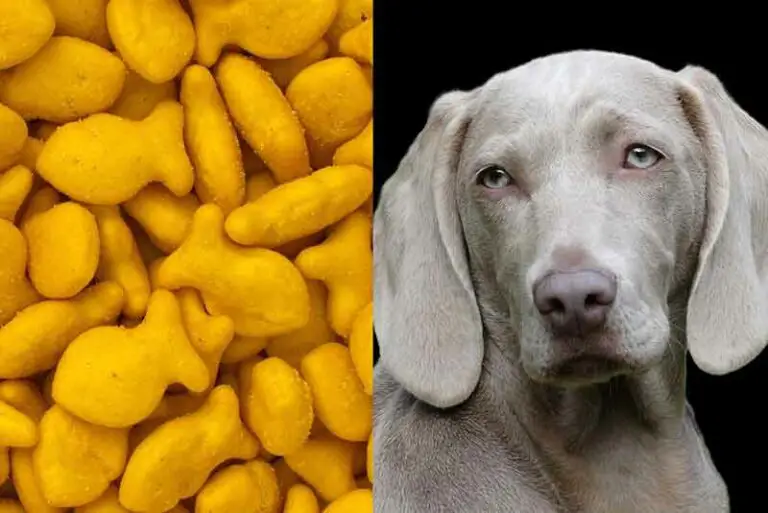Can Dogs Eat Lobster? Risks + Safe Recipes + Tips
Everyone loves to raise pet animals. Dogs are the most commonly raised pets because; they are lovely, playful, and energetic guardians. Most dog lovers even share their food with them.
So, can dogs eat lobster is a common question among those who share their foods and treats with their pet friends. Therefore, I have focused on all the information related to the safety of eating lobster by dogs.
So, can dogs eat lobster? Yes, they can eat, but not much. If you exceed the amount, it can be harmful to your pet. They can call for diseases like; obesity and various shocking hazards with the amount of sodium contained in them. And also, there are some methods to successfully provide lobsters. You can give it as a snack or mix it with the normal canned or dry food. But, be alert to allergic symptoms such as; hives, hair loss, ear infections, itchy skin, etc. Therefore, as a good dog owner, giving safe food for your dog is in your hand.
Accordingly, in this article, I have covered; can your furry friends eat lobster, are risks involved with eating them, what are the allergic symptoms associated with them, and finally, I have provided you with some good methods to safely provide lobster for your pet.
Let’s get started!
Can dogs eat lobster?
Many dog owners like to share everything that they eat with their pets. So, the people who often eat seafood are more likely to ask, can dogs eat lobster? So, the short answer here is yes; they can eat.
But, there are many things to be discussed under this. Therefore, let’s talk about this issue in more detail.
Almost all the terriers love to eat meat, fish, eggs, etc., when it comes to lobster; as true carnivores, they are more likely to be attracted.
Anyway, it is not a secret that these food items have a variety of nutritional benefits for humans. But, when it is associated with dogs, it can be complicated.
Lobster contains many proteins, zinc, essential minerals, phosphorus, fatty acid, and omega-3. Therefore, your dog may have many different advantages such as;
- Protein: the pet dog could maintain healthy muscles with a significant amount of protein.
- Omega-3s: Your pet friend’s health will be boosted by reducing inflammation and the risk of illness.
- Zinc: healthy joints are promoted due to zinc.
- Phosphorus: the dog will be able to maintain healthy bones, and magnesium aids in absorbing the other minerals and vitamins.
Although lobster is beneficial for dogs, it is not safe for them to eat lobster shells because they can bring shocking hazards for them, along with pain in the stomach and the throat. So, make sure to give them without the shell.
What are the risk factors of eating lobster?
When talking about whether dogs can eat lobster or not, we should pay attention to the risk factors involved with that because; food can bring both health benefits as well as health hazards at once if you provide them without better management.
So, let’s see the risks of eating lobster by your pet dog with more details here.
1. Lobster shells
These are not safe for the dogs with the shocking damages that occur. They can hurt their stomach and the throat as well. And, its teeth may also not be strong enough to break that shell.
So, in reality, they might choke with it. Due to the sharp edges, internal damages may also occur in its esophagus and the digestive system. And a blockage in the digestive system can take place with the pieces of the shell. That’s why some dogs tend to vomit after eating lobster.
2. Rich with sodium
Do you know that; almost 5% of lobster contains pure sodium? It is a large amount even for humans. And it plays a major role in the state of hydration of the body. Supporting cells to breathe and transmission of nerve impulses are some other functions of this mineral.
Anyway, an excessive amount of this can lead to adverse effects such as losing bone mass (osteoporosis) and high blood pressure. So, it will risk your heart, kidney, and stroke.
3. Obesity
This is commonly seen among many dogs at present. But, you can control this through better management of their nutrition.
So, the risk of obesity appears directly with lobster. It affects the emergence of heart attacks, high blood pressure, and joint complications.
4. Shocking hazards
There is a natural protection for lobster with a tough shell to protect themselves from the outside predators.
So, it is very hard to break even when they are cooked, and if you remove the shell, there will still be its pieces remaining in them. Then, they can bring hazards by leading to suffocation and even death.
5. The high amount of cholesterol
This is very bad for any canine because it can cause many health problems like; pancreatitis, which will lead to inflammation in the pancreas by causing pain and even death.
This can occur with a couple of fatty, rich meals from eating a small number of lobsters. Therefore, it is better to be alert to the amount of fat your pet gets with its meals and avoid taking more lobsters rich with fat.
What are the allergic symptoms associated with lobster?
Now, you know that it is not safe to provide a large amount of lobster for your pet. Sometimes, dogs show allergic symptoms when getting them more.
In such a situation, you should clearly understand those symptoms to provide the necessary treatments. Therefore, let’s focus on them through this.
Most of the vets’ opinion is that they are not allergic to canines. But, no one can exactly say that they are not allergic to all the furry friends until they eat them.
Some people do not like to share this expensive luxury food item with their pets, but many others love to enjoy it with their pets.
Anyway, if you are providing it for your friend for the first time, it is better to be alert of the following symptoms.
- Hives
- Hair loss
- Ear infections
- Itchy skin
- Obsessive chewing or licking of the feet
- Skin infection
- Runny eyes
- Runny nose
It is not a secret that most dogs’ allergies are combined with their food items. With food intolerance, canines may face many difficulties, including; diarrhea, serious gas, and other gastrointestinal problems.
Accordingly, some of the most common food items that become allergic for dogs apart from lobster are;
- Chicken
- Beef
- Pork
- Egg
- Lamb
- Dairy
- Wheat
- Fish
How to serve lobster for your pet?
Everyone who owns a dog as their pet loves to give every comfort that they need. Even they share their treats with them. But, can dogs eat lobster? Now, you know the answer to this.
As they are not completely risky food items for them, you can try various methods to safely provide them for your friend. So, let’s discuss them here.
Accordingly, you may provide them for your pet;
- As a treat or as snacks
- Mix with the canned or dry food of them
Most vets do not recommend giving seafood without being cooked. It is better to cook them well before giving them to your pet because; you can prevent parasites and bacteria present in the raw food by cooking it well.
And, if you like spicy bites, you can try it also with lobster. But, as dogs are not likely to eat more spiced food, it is better to provide plain food without hard spices.
Accordingly, the best way to provide lobster for your furry friend is to steam or boil them in plain water until they are cooked properly.
Also, make sure to begin to provide this on a small scale until you confirm that they do not cause problems and that they are not allergic to your friend. And, if you notice any of the allergic symptoms in your dog after eating them, immediately take him to the vet.
But, if it loves and enjoys the treat without any trouble, provide it at a moderate level because they are not safe to provide with more lobster at once. Remember that almost all seafood items have a significant amount of mercury which can become harmful for them.
At the same time, remember to remove all the bones in seafood before giving it to the dog as they do not separate the bones when eating. They can create problems like; blockade in the throat, obstruction in the digestive system, etc.
And, apart from lobster, there are some other food items that your pet can eat like;
- Shrimp
- Salmon
- Crab
- Tuna
- Clams
But, make sure to provide them all at a moderate level without exceeding the amount.
Final thoughts about feeding your dog with lobsters
We have discussed; can dogs eat lobster with more details in this article. I think this article will work out for all the dog owners as I have given you much significant information related to their food as; can dogs eat lobster, what are risks involved with eating them, what are the allergic symptoms associated with them, and finally, I have provided you with some good methods to safely provide lobster for your pet.
Dogs are lovely and playful guardians for anyone. Therefore many people like to own them as their pets, and they always try to share their food also with the pet.
So, the main problem among seafood lovers is to know whether their furry friends can eat lobster. Yes, simply we can say that they can eat them but make sure not to cross the limits because it will cause many shocking hazards.
And, you can understand whether they have allergies with lobster by being alert on the symptoms like; hives, hair loss, ear infections, itchy skin, obsessive chewing or licking of the feet, skin infections, etc.
So, you can safely provide them as snacks and by mixing with their regular canned or dry foods. Accordingly, as the owner, you are responsible for taking care of your pet and their food.
Thank you for reading this post. I hope it answered your burning questions about your dog. Stay tuned with Jack Russell Owner for more interesting posts.








![Raw Diet For Dogs With Allergies [Any Good?].jpg](https://jackrussellowner.com/wp-content/uploads/2023/11/Raw-Diet-For-Dogs-With-Allergies-Any-Good-768x433.jpg)